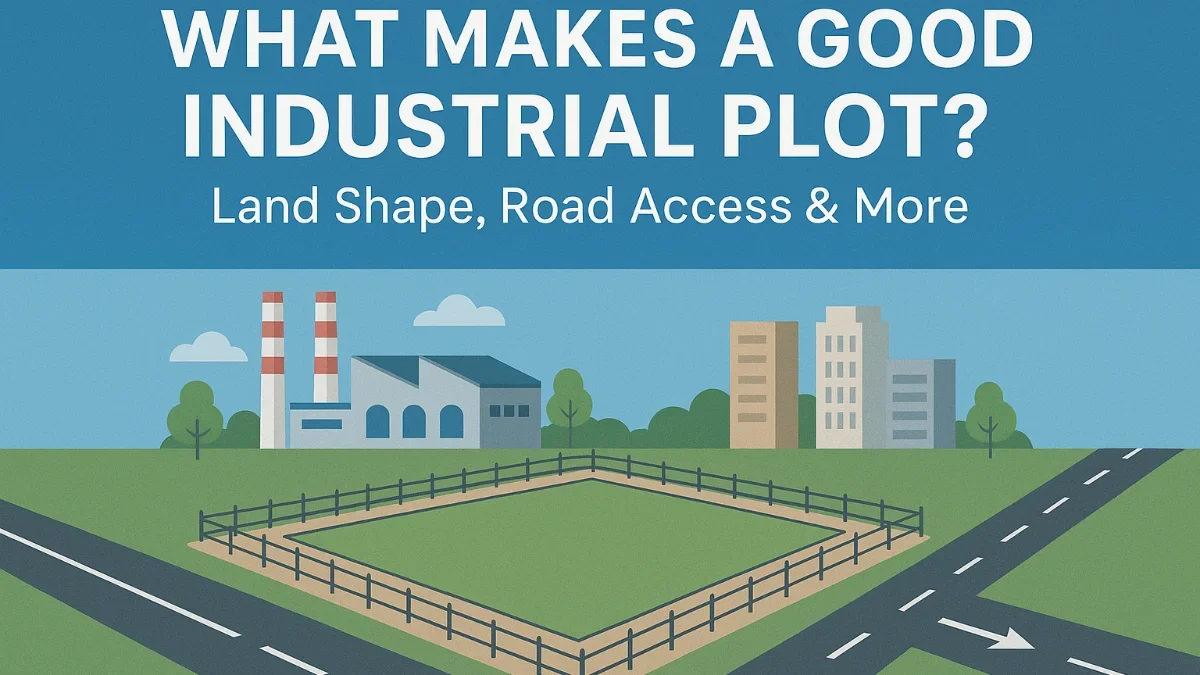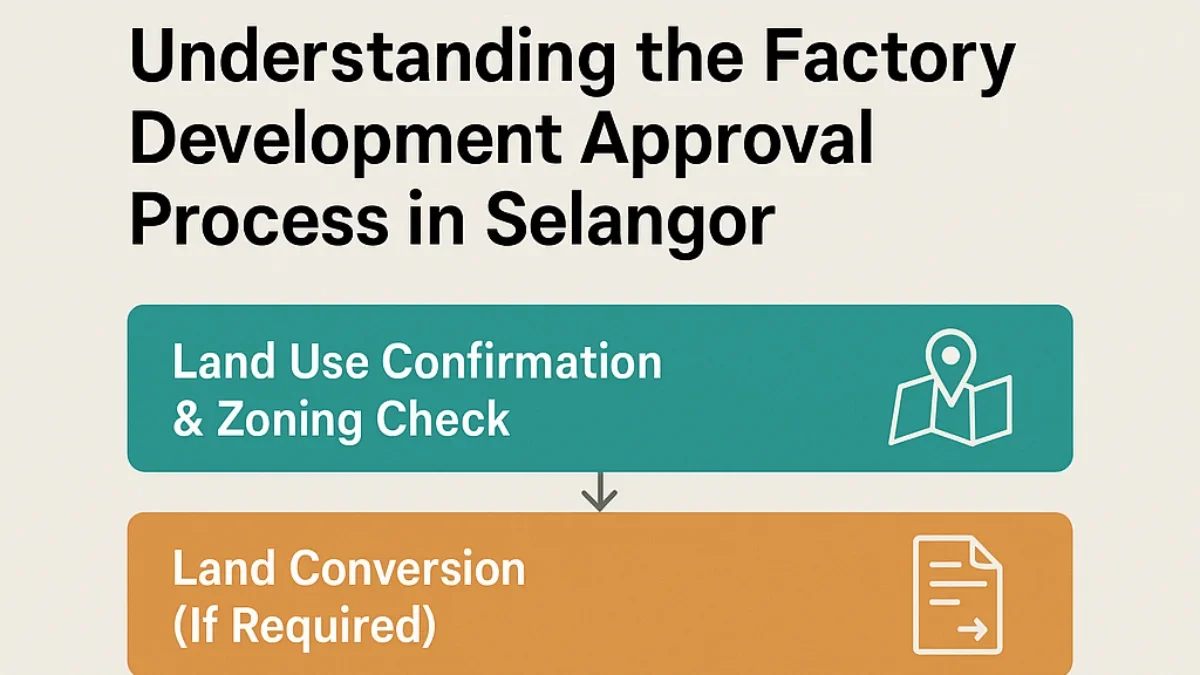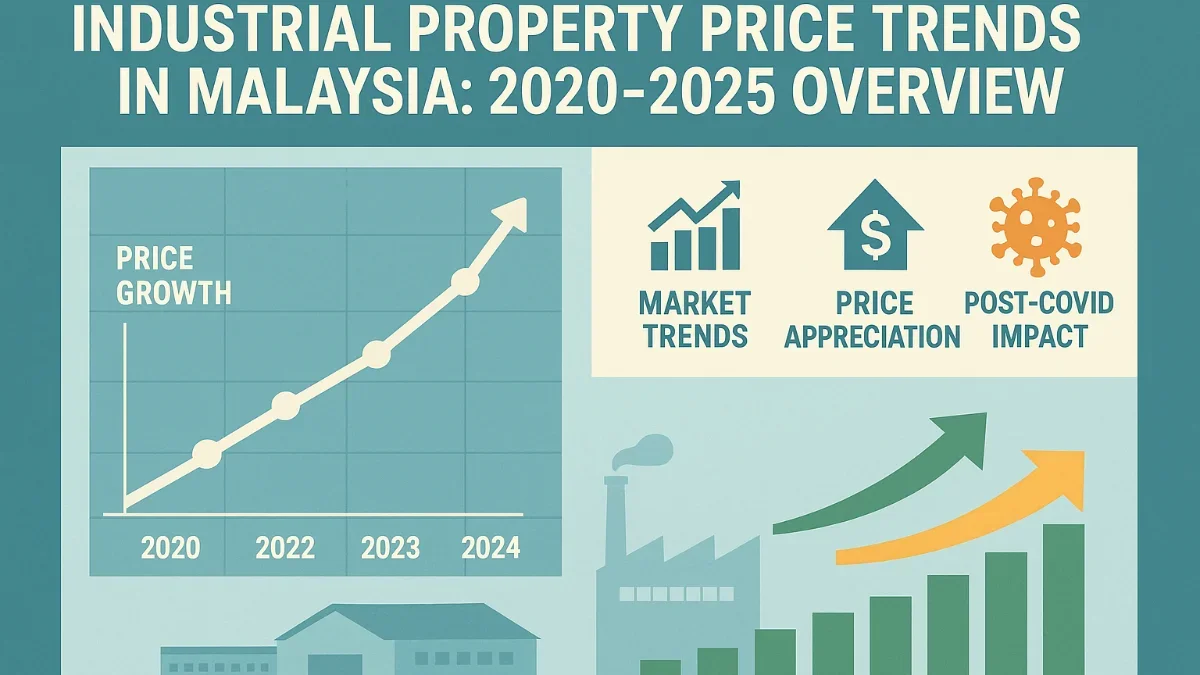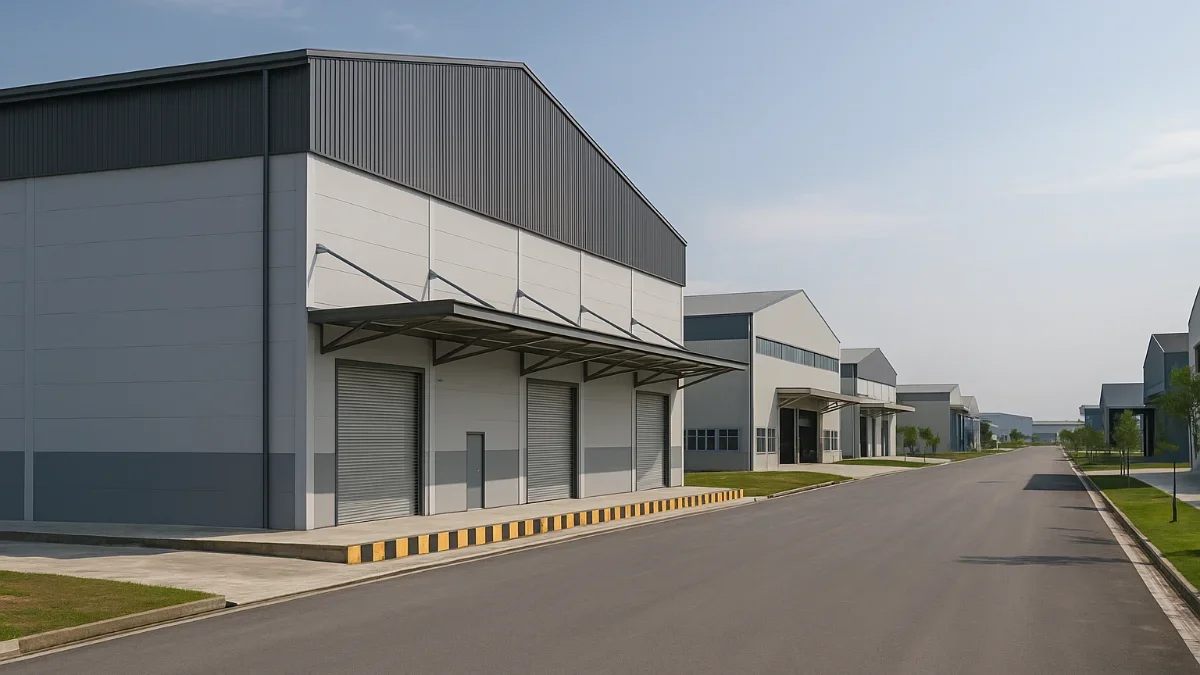Choosing the right industrial land is crucial for efficient operations and future expansion. Discover the top features that define a high-potential industrial plot.
What Makes a Good Industrial Plot? Land Shape, Road Access & More
Investing in industrial land is more than just buying a piece of earth—it’s about choosing a strategic asset that supports efficient operations, smooth logistics, and long-term growth. Whether for a factory, warehouse, logistics hub, or build-to-suit development, selecting the right plot can significantly impact construction cost, operational efficiency, and future scalability.
Here are the key features that make an industrial plot truly functional and investment-worthy:
1. Optimal Land Shape: Regular, Rectangular Plots Preferred
-
Why it matters: A regular-shaped plot (typically rectangular) allows for more efficient building layouts, better space utilization, and smoother traffic circulation within the site.
-
Red flags: Irregular, triangular, or L-shaped lands may result in wasted space, complex building designs, and higher construction costs.
2. Road Frontage & Access: Connectivity Is Key
-
Direct access to major roads/highways: Enhances logistics efficiency, reduces transportation time and cost.
-
Wide frontage: Facilitates easier entry/exit for large vehicles, including container trucks.
-
Corner lots: Offer multiple access points and better visibility—ideal for logistics or showroom-integrated industries.
3. Zoning & Land Use Approvals
-
Industrial zoning (e.g., Heavy, Medium, Light Industrial) must align with your intended use.
-
Ensure the plot is gazetted and approved for industrial development to avoid future compliance issues.
-
Check with local councils or MIDA on permissible activities and restrictions.
4. Topography: Flat, Ready-to-Build Land
-
Flat terrain minimizes site preparation cost and accelerates construction timelines.
-
Avoid plots with:
-
Steep slopes (need costly earthworks)
-
Water retention issues or flood-prone zones
-
Soft soil conditions that require piling
-
5. Infrastructure Readiness: Power, Water, Internet, Drainage
-
Electricity supply: Access to medium- or high-voltage power substations if heavy machinery is involved.
-
Water availability: Especially for food processing, manufacturing, or chemical use.
-
Internet: Fiber optic availability is increasingly important for smart factories and warehousing systems.
-
Drainage system: Proper stormwater management is essential for regulatory approval and site safety.
6. Proximity to Talent & Amenities
-
Plots located near industrial townships or worker housing areas are more attractive.
-
Access to nearby amenities such as petrol stations, eateries, workshops, and banks increases convenience for staff and operations.
7. Accessibility to Ports, Airports, and Hubs
-
For export-oriented businesses, proximity to major ports (e.g., Port Klang, Johor Port) or airports (KLIA, Senai Airport) is a strong advantage.
-
Being near logistics corridors like the ECRL or North-South Expressway can drastically improve supply chain efficiency.
8. Future Development Potential
-
Choose land in areas with ongoing or planned infrastructure projects, such as industrial parks, highways, or logistics hubs.
-
Evaluate capital appreciation prospects and upcoming government initiatives (e.g., Free Trade Zones, bonded warehouse clusters, etc.).
9. Legal and Ownership Clarity
-
Ensure clear title, no encumbrances, and proper subdivision.
-
Freehold vs. Leasehold: Each has its pros and cons. Freehold offers permanent ownership; leasehold may come with favorable rates but limited tenure.
10. Environmental and Regulatory Compliance
-
Avoid land with:
-
Environmental restrictions (e.g., forest reserve, near protected areas)
-
Heritage status
-
Encroachment issues
-
-
Always conduct land due diligence, soil investigation, and BOMBA compliance planning early in the process.
Conclusion
A good industrial plot goes beyond location—it combines shape, infrastructure readiness, accessibility, and regulatory clarity into a cohesive investment package. For businesses planning long-term operations in Malaysia, choosing the right industrial land can result in smoother construction, lower costs, and higher operational efficiency.
Contact us Call Kenneth 017-380 9993 Or WhatsApp our team directly for the latest availability



